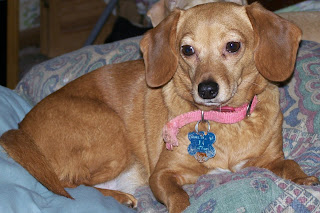Documentation is so very important in animal rescue. The first aspect of documentation should always be pictures. Pictures will be verification of the animal’s condition when it arrived as well as a way to measure how the animal is improving in your care. You don’t have to have a fancy camera to take pictures. Any digital camera will do. You can also use a traditional film camera. When an animal arrives at the rescue the first thing you should do is take several pictures of it. You need to take pictures from each side, and front and back. Also, please consider that you need to get as close up to the subject as we can. You want good clear, easy to see pictures. You should always make sure that the date function is working on the camera, so that the date stamp and time stamp is showing. If you are using a traditional film camera, you will need to make sure to get the date in the picture. What you could do is write the date on a large sheet of paper and place it in frame.
It is a good idea to take pictures at least every 2 weeks if the animal was in very bad shape when it arrived. Not only to serve as proof that the animal is improving in your care but to serve as a guide for you. Sometimes just physically looking at an animal you can’t really see progress especially if it is subtle. Observing pictures in a timeline, you can easily pin point if your animal is improving or if it is regressing or simply if it is status quo.
Taking pictures to document the animal’s physical well being is very wise for another reason. We touched base on the first reason. The second reason is to serve as evidence. Often times a well meaning person might not know that the animal arrived in dire need at your place. It is human nature to automatically think the worse. People will often assume things without knowing the whole story. When an ill informed person sees a thin or neglected animal they may think you caused the decline in health and physical well being for that animal. What is common to us in rescue, may look really bad to the outsiders. So, be prepared for surprises. One day you may get a knock on your door from Animal Control or Police Officers. You later find out that someone reported you for animal cruelty or neglect. That is when you pull out your well documented photographic evidence to display in your defense. Your time line should prove what the animal looked liked when it arrived. It should prove that the animal as in fact improved in your care. To make the photos more convincing to the public officials , show them supporting evidence that the animal has been seen by a vet. Beware though, sometimes they like to press charges first and ask questions later. Don’t be caught off guard if this is the case. When you have your day in court present all your evidence to the Judge. Trust the he or she will be fair and see the truth that you evidence permeates.
A rescue can never have enough documentation on the animals that they take in. Good record keeping is an absolute must. Good records back up rescues and support their intentions.
BELOW IS SOME EXAMPLES OF BEFORE AND AFTER SHOTS THAT I HAVE DONE!


The pictures above is of Bandit. She came to us weighing only 39 pounds. The first picture is of her when she arrived. The picture on the bottom shows what Bandit looks like at her current weight of 60 pounds. Bandit had been allowed to fight with other dogs, she had sores all over her face. She was very under weight. Bandit, is a forever resident of our rescue.

Speckles was abandoned in an apartment for 3 weeks with her puppies. Her owner had moved and left her to fend for her self and her babies. The picture to the right reflects what Speckles looked like after being with us for a while. Speckles was adopted by a retired couple in Richmond VA. Speckles takes trips with he humans and her canine sisters. They go to the beach together.
These pictures are of Mocha. We took her in when her owner could not afford treatment for mange. She has scabies. We took her in without question, and 6 weekly trips to the vet all her hair grew back. Once that complication was almost over she developed rickets ( see the 2nd picture of her crooked legs). Rickets is caused when the body does not metabolize the calcium and phosphorous in food. Dr Boyce, got her on the right track with supplements. The last picture is what Mocha looks like today.



